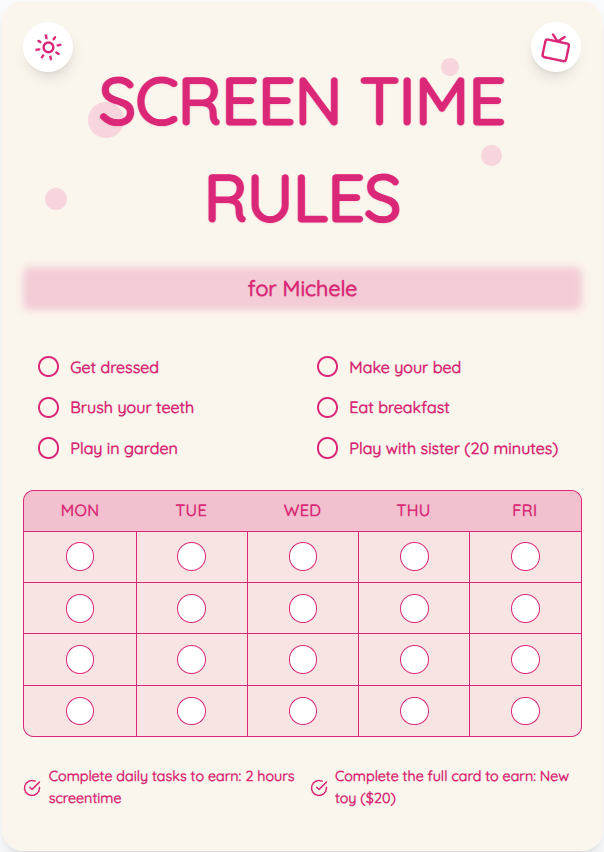How to Set a Healthy Screen Time Limit for Kids: A Practical Guide
As a parent, finding the right balance for your child's screen time can be challenging. With the rise of digital devices, setting a healthy screen time limit is crucial for your child's development and well-being. In this comprehensive guide, we provide actionable advice and practical tips to help you navigate the world of screen time management effectively.
See What Your Screen Time Chart Will Look Like
Here's an example of a beautiful, customizable screen time rules chart you can create for your family

Understanding the Importance of Setting Screen Time Limits
Excessive screen time can have negative impacts on your child's physical health, mental well-being, and social skills. By setting limits, you promote healthier habits and encourage a balanced lifestyle. It's essential to consider factors like age-appropriate content, quality screen time activities, and the recommended daily limits based on experts' guidelines.
Practical Tips for Establishing a Screen Time Routine
1. Create a screen time schedule that aligns with your family's routine. 2. Use screen time charts as visual aids to set clear boundaries. 3. Encourage alternative activities such as outdoor play, reading, and creative hobbies. 4. Be a role model by practicing healthy screen habits yourself. 5. Engage in screen time activities together to monitor content and promote bonding.
Put These Tips Into Action
Create a custom chart to implement these strategies with your child
Monitoring and Adjusting Screen Time Limits
Regularly monitor your child's screen time usage and adjust limits as needed. Be flexible based on changing circumstances but maintain consistency in enforcing rules. Use positive reinforcement and open communication to explain the reasons behind screen time limits and involve your child in decision-making processes.
Practical Tips for Success
- Set specific daily time limits for different types of screen activities.
- Establish tech-free zones in the house, such as meal times and bedrooms.
- Use screen time charts or apps to track and manage your child's screen time usage.
- Encourage physical activity breaks during prolonged screen sessions.
Frequently Asked Questions
How much screen time is recommended for children aged 2-12?
The American Academy of Pediatrics recommends no more than 1 hour of high-quality screen time per day for children aged 2-5, and consistent limits for older children, with a focus on balancing screen time with other activities.
How can I handle resistance from my child when enforcing screen time limits?
Communicate openly with your child about the reasons behind screen time limits and involve them in creating the rules. Offer alternatives and rewards for complying with the set limits to make the transition smoother.
Are there any benefits to setting screen time limits for kids?
Setting screen time limits can promote better sleep patterns, improved focus and attention span, enhanced social interactions, and increased engagement in physical activities and hobbies.
By implementing these practical tips and strategies, you can create a healthy screen time environment that fosters your child's overall well-being and development. Remember, moderation is key when it comes to screen time management. Explore our screen time charts at ScreenTimeRules.com to simplify the process further.
Ready to Transform Your Family's Screen Time?
Join thousands of parents who have successfully managed screen time with our customizable charts.
